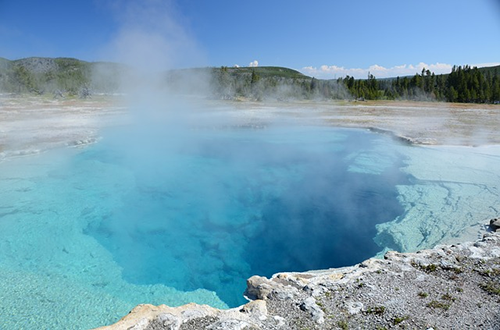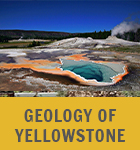Yellowstone

Yellowstone is one of the world’s largest active volcanic systems. Its history began 16.5 million years ago when present-day southeastern Oregon sat over a hotspot—a massive plume of hot material
upwelling from the earth’s mantle. Around this time, the first in a series of catastrophic volcanic eruptions occurred that would progress northeast as the North American Plate drifted southwest
over the stationary hotspot.
Yellowstone now sits over the hotspot, and its rocks record evidence of the three most recent caldera-forming eruptions, which occurred 2.1 million, 1.3 million, and 631,000 years ago. The first
eruption was the largest, releasing 588 cubic miles of material, and the most recent eruption formed the 30- by 45-mile-wide Yellowstone caldera. Each caldera-forming eruption was preceded and
followed by a period of smaller eruptions that mostly occurred in the form of slow-moving lava flows. Around 80 of these lava flows—the youngest of which is 70,000 years old—have occurred since
the last caldera-forming eruption.
Today, the silicic magma chamber is a few miles beneath the surface of Yellowstone and is composed of 10–30 percent molten rock. This shallow heat source is what creates Yellowstone’s
world-famous hydrothermal features and is what drives many of the active geologic processes in the region.
Additional Information:

Contact:
James Mauch, james.mauch@wyo.gov